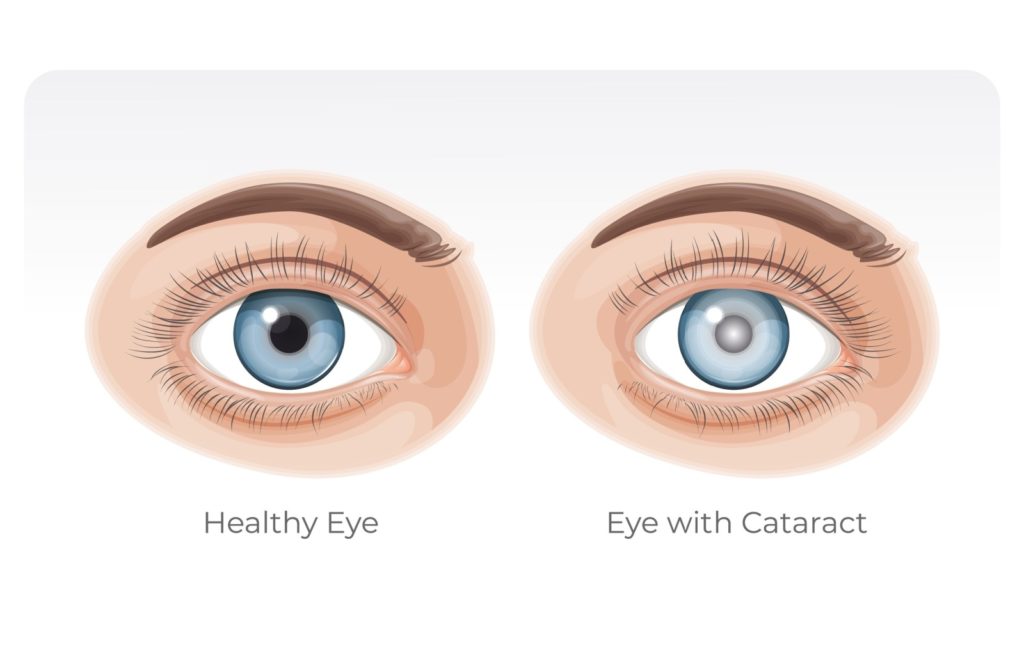Cataract surgery is one of the most common and successful procedures performed worldwide. This surgery usually results in improved vision by removing the cloudy lens and replacing it with an artificial one. However, many patients and their families often wonder: Can cataracts return after surgery?
While cataracts cannot return after surgery because the cloudy natural lens is removed and replaced with a clear artificial intraocular lens, a condition called Posterior Capsule Opacification (PCO) can develop, which may cause similar symptoms.
For comprehensive eye care and expert treatment after cataract surgery, trust Red Deer Eye Care. Our dedicated team is here to make sure that your vision remains clear and healthy.
Understanding Cataracts
To address this question, it’s essential first to understand what cataracts are. A cataract is a clouding of the eye’s natural lens, which lies behind the iris and the pupil. It is primarily associated with aging, but can also result from injury, certain diseases, or prolonged use of specific medications.
The Surgical Process
During cataract surgery, the cloudy natural lens of the eye, which has developed a cataract, is meticulously removed by the surgeon. This is done to restore clear vision that had been obstructed by the cloudiness of the cataract.
The removed lens is then typically replaced with a clear artificial intraocular lens (IOL). These IOLs are made from durable materials like silicone, acrylic, or other plastic compositions, and are designed to last a lifetime. Due to the permanent nature of these artificial lenses, they remain clear indefinitely, effectively eliminating any possibility of the original cataract returning.
However, while the original cataract cannot recur, there are some conditions and complications that can arise post-surgery. One of the most common issues is Posterior Capsule Opacification (PCO), sometimes referred to as a “secondary cataract.”
Additionally, other potential complications, although less common, include inflammation, infection, bleeding, swelling, retinal detachment, and increased eye pressure. Pre-existing eye conditions, such as glaucoma or diabetic retinopathy, can also affect the overall outcome of cataract surgery and may require additional monitoring and management.
It is important for patients to have regular follow-up appointments with their eye care professional after cataract surgery. These appointments help in early detection and treatment of any complications, ensuring long-term success of the surgery and maintenance of clear vision.
Posterior Capsule Opacification (PCO)
The most common issue mistaken for a recurrent cataract is Posterior Capsule Opacification (PCO). PCO is sometimes referred to as a “secondary cataract,” though it is not an actual cataract. During cataract surgery, the surgeon removes the cloudy lens but leaves the back part of the lens capsule intact to help support the new intraocular lens. Over time, cells may grow across this capsule, causing it to become cloudy and affecting vision.
Symptoms of PCO
- Blurred vision
- Glare or halos around lights
- Difficulty reading or seeing in bright light
Treatment for PCO
Fortunately, PCO can be easily treated with a procedure called YAG laser capsulotomy. This quick, non-invasive treatment involves using a specialized laser to create a small opening in the cloudy capsule that is causing vision problems. The laser precisely targets the opacified area without affecting the surrounding eye structures. By making an opening in the capsule, it allows light to pass through clearly to the retina, thereby restoring sharp and unobstructed vision.
YAG Laser Capsulotomy
The YAG laser capsulotomy is typically performed as an outpatient procedure, meaning you won’t need to stay in the hospital. It usually takes only a few minutes to complete and does not require any incisions. Most patients experience an immediate improvement in their vision following the procedure.
Recovery from YAG laser capsulotomy is generally swift. Patients can return to their normal activities almost immediately, although it is recommended to avoid strenuous activities for a short period. Any discomfort is minimal, and the risk of complications is very low. Follow-up visits may be scheduled to ensure the success of the treatment and to monitor overall eye health.
This straightforward and effective procedure makes it so patients can enjoy long-lasting clear vision after cataract surgery without significant downtime.
Life After Cataracts
While the original cataract cannot return after surgery, patients can develop Posterior Capsule Opacification, which can mimic the symptoms of cataracts. Fortunately, this condition is treatable with a simple laser procedure. If you experience any changes in vision after cataract surgery, consult with your eye care provider to determine the cause and appropriate treatment.
Regular eye check-ups and a healthy lifestyle can contribute significantly to maintaining good eye health post-surgery. If you have any concerns about cataract surgery or your eye health, do not hesitate to reach out to a healthcare professional for personalized advice.
At Red Deer Eye Care, your vision is our priority. If you’ve had cataract surgery and are experiencing any changes in your vision, don’t wait—schedule an appointment with our experienced team today.



